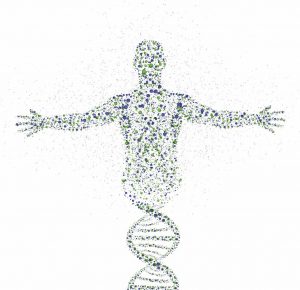 For many of us, the words “big data” have taken on sinister connotations, evoking stories of data breaches, manipulation and abuse. But in medicine and pharmacology, Jan Lethen ’93 believes big data is already saving lives—and in the future, it’s going to get even bigger and save many more.
For many of us, the words “big data” have taken on sinister connotations, evoking stories of data breaches, manipulation and abuse. But in medicine and pharmacology, Jan Lethen ’93 believes big data is already saving lives—and in the future, it’s going to get even bigger and save many more.
What’s Next For:
Revolutions?
Syria?
Mexico?
Japan?
The United States?
Earthquake Safety?
Climate Action?
California Water?
Climate Science?
Solar Energy?
California Fruit Farming?
Technology Investing?
Nanoscience?
Digital Storage?
Artificial Intelligence?
Cyber-Threats?
Social Media?
Space Exploration?
Science Museums?
The Sagehen?
Biodiversity?
The Blind?
Big Data?
Mental Illness?
Health Care Apps?
Maternity Care?
Etiquette?
Ballroom Dance?
Thrill Seekers?
Outdoor Recreation?
Funerals?
Writers?
Movies?
Manga?
Alt Rock?
Women in Mathematics?
As director of statistical programming in observational research at the biopharmaceutical firm Amgen, Lethen works with a storehouse of anonymous data from over 100 million patients worldwide. Statistical research based on that data, he says, permits companies like Amgen “to support product safety, to profile diseases, to design more effective clinical trials and to forecast populations that would most benefit from our drugs.”
As a sign of the future, Lethen points to a new app that pairs with Apple’s iWatch, enabling patients to link their health records to their biometric data, potentially making that linked data available for researchers. “We’re seeing more and more types of data being brought together and linked together,” he says. “So that might include genetic data, which is critical in fields like oncology.”
He also points to an NIH-funded initiative called “All of Us,” which seeks to collect genetic data and other health data from a million Americans for research purposes. “These data sets are going to get ever more complex, ever more extensive, ever more complete in the history of the patient,” he says.
Indeed, the ability to tailor medicine to the patient may become so exact that drug companies may charge only for successful treatments. “That’s a move that a number of pharma companies are currently working on with payers,” Lethen says. “They can say, ‘Hey, if you give our drug to these patients with these characteristics and it doesn’t work, you don’t have to pay for the drug.’ That will be a new business model that will continue to expand.”
The ultimate goal, he says, will be medicines tailored to a single individual. “Especially with oncology, you could say, ‘Hey, if you use this therapy in conjunction with these two other things, we are confident it’s going to work for you. The level of detail that we have on each patient right now doesn’t allow us to do that, but as we build out those genetic profiles for each patient and they become more and more unique, we’ll be able to build profiles that actually do get down to very small patient cells, and perhaps, eventually, to a patient level of one.”
